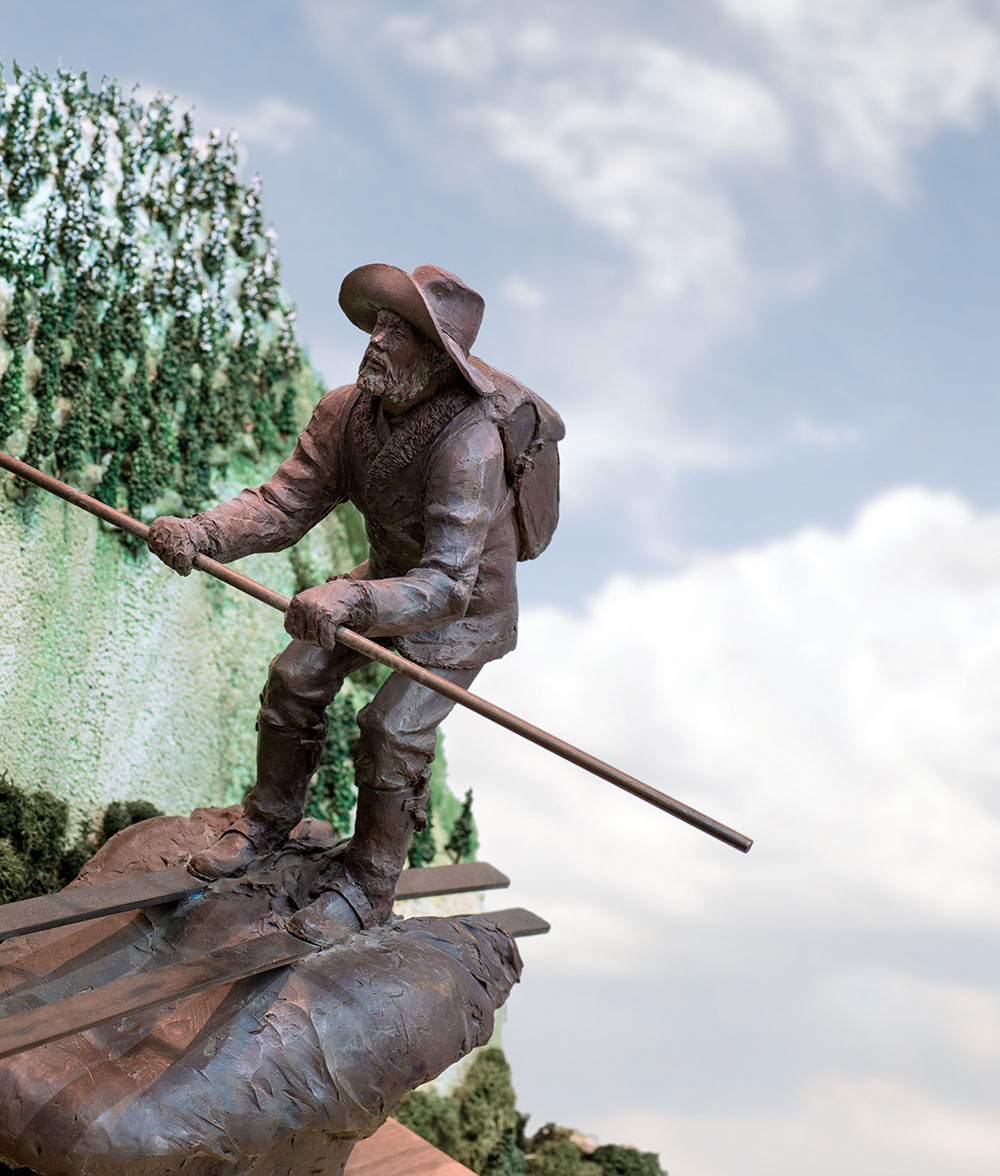Snowshoe Thompson
Winter 2023
Hero of the Sierra Nevada skied his way into history.
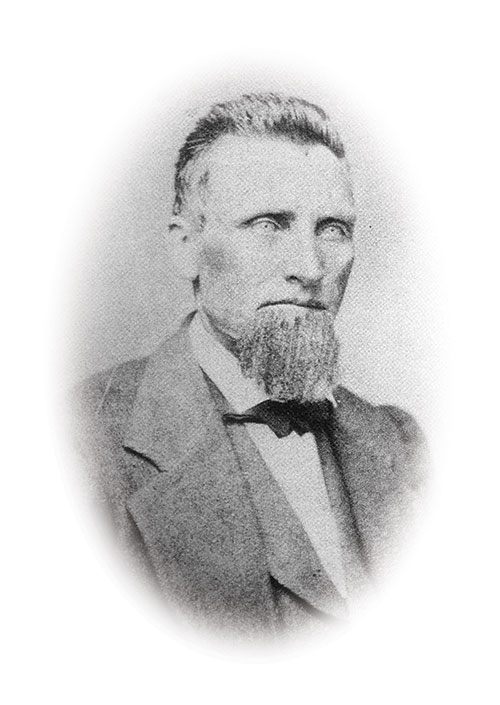
From adventurers and gunslingers to writers and thinkers, Nevada’s history was shaped by individuals with grit and drive. Each issue, we look at one of these notable heroes from the past. Whether born or raised, these aren’t just Nevadans: they’re Legendary Nevadans.
 Imagine climbing countless flights of stairs for three consecutive days with little rest and a 90-pound pack on your back. That was essentially the level of rigor Carson Valley legend John A. Thompson—better known to history as “Snowshoe” Thompson—endured on each of his 90-mile expeditions over the Sierra Nevada Mountains for nearly 20 years.
Imagine climbing countless flights of stairs for three consecutive days with little rest and a 90-pound pack on your back. That was essentially the level of rigor Carson Valley legend John A. Thompson—better known to history as “Snowshoe” Thompson—endured on each of his 90-mile expeditions over the Sierra Nevada Mountains for nearly 20 years.
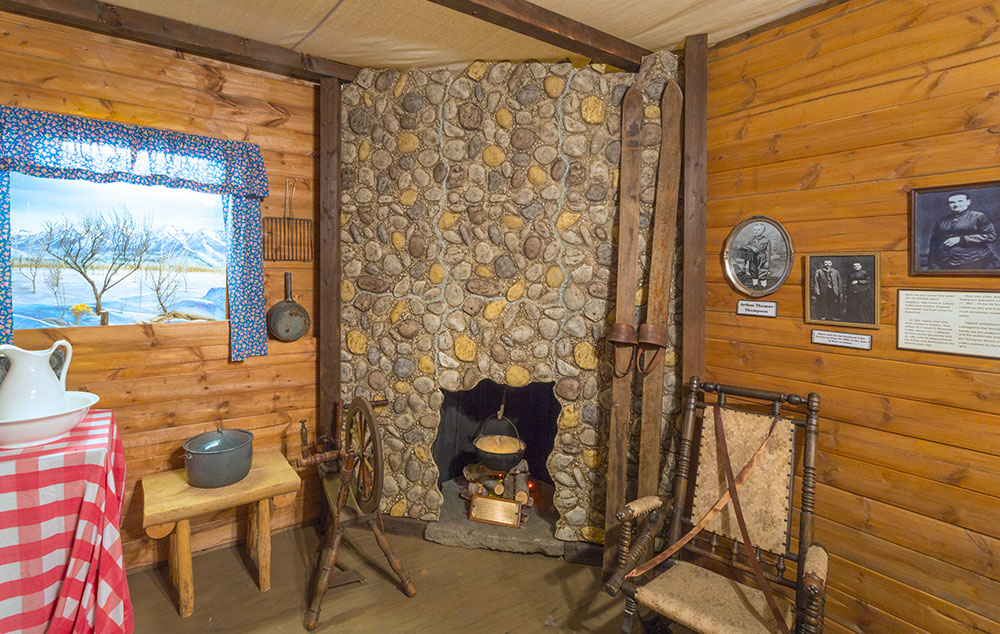
Born in Norway in 1827, Thompson emigrated to the U.S. with his family in 1837. They lived in Illinois, Wisconsin, Iowa, and Missouri before Thompson and his half-brother headed West after hearing about the Gold Rush. While he did not find his fortune, he fell in love with the Sierra Nevada, which reminded him of his homeland. He found his escape back to the mountains in the fall of 1855.
An article in the “Sacramento Union” requested an able-bodied individual who could carry the mail between Placerville, California, and Genoa during the harsh winter months. Stating “People Lost to the World; Uncle Sam Needs a Mail Carrier,” the article explained how the cold and heavy snow cut off communication for people across the West from the rest of the world. A few brave men previously tried to do the job, but frozen limbs and death hindered success.
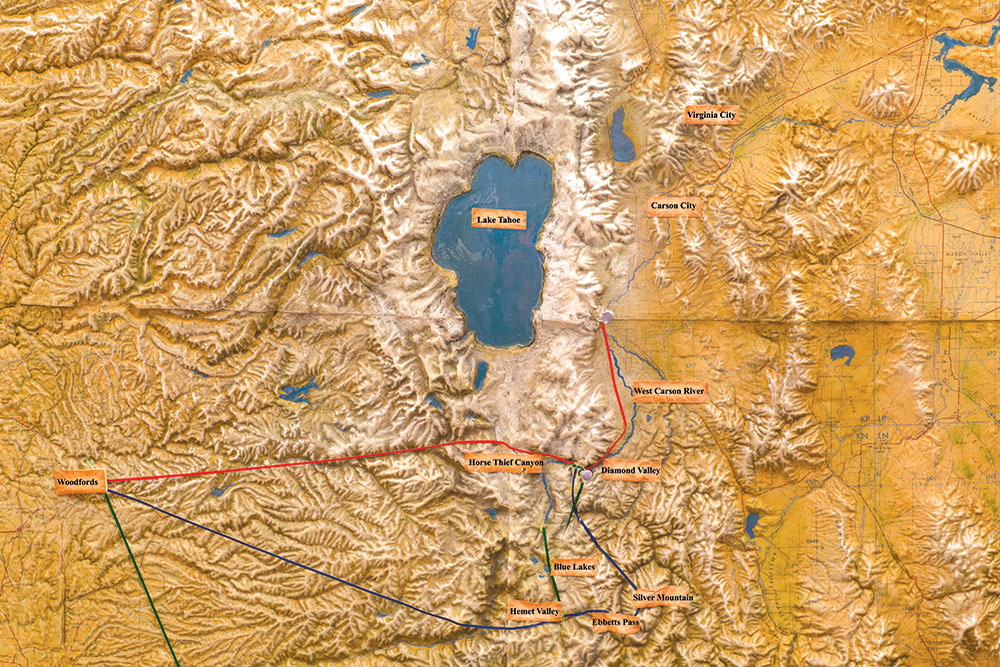
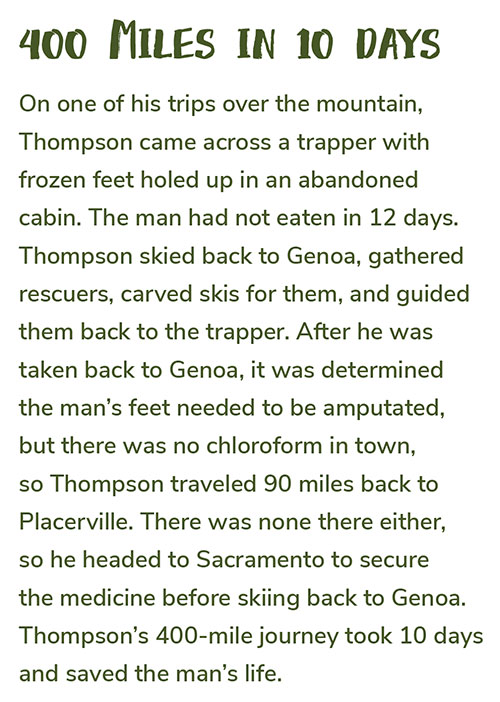 Thompson accepted the job; he did not fear the cold or terrain. He decided to use a Norwegian form of transportation as a means of travel over the mountains and began crafting a pair of snow skates. After cutting an oak tree into 4-inch-wide, 10-foot-long planks, he soaked the ends, steamed them, and then bent and carved them into 25-pound crude skis.
Thompson accepted the job; he did not fear the cold or terrain. He decided to use a Norwegian form of transportation as a means of travel over the mountains and began crafting a pair of snow skates. After cutting an oak tree into 4-inch-wide, 10-foot-long planks, he soaked the ends, steamed them, and then bent and carved them into 25-pound crude skis.
In January 1856, Thompson began his first trip over the mountains to Genoa. As he was leaving town, it is rumored that someone yelled out, “Good luck, ‘Snowshoe’ Thompson!” A new name and a legend were born. On a trip that took other men weeks, if they made it at all, Snowshoe made it from Placerville to Genoa in three days and returned in two. The trek was often covered with 30 to 50 feet of snow.
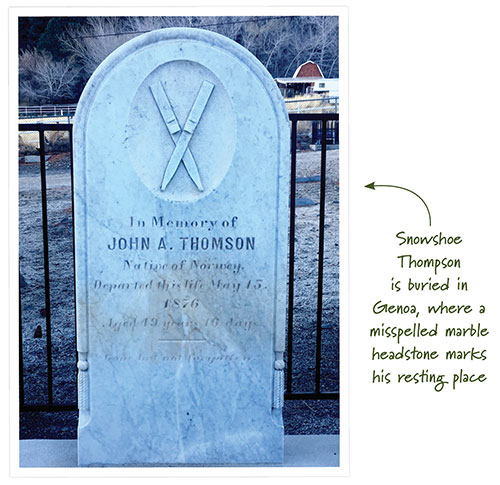 For the next 20 years, Snowshoe Thompson would carry the mail to the people of Genoa, but he was so much more than a mailman. He often purchased things for people, adding items they needed to his already weighty pack. If they could not pay him, it was no matter: he loved his community and the country that had become his home.
For the next 20 years, Snowshoe Thompson would carry the mail to the people of Genoa, but he was so much more than a mailman. He often purchased things for people, adding items they needed to his already weighty pack. If they could not pay him, it was no matter: he loved his community and the country that had become his home.

